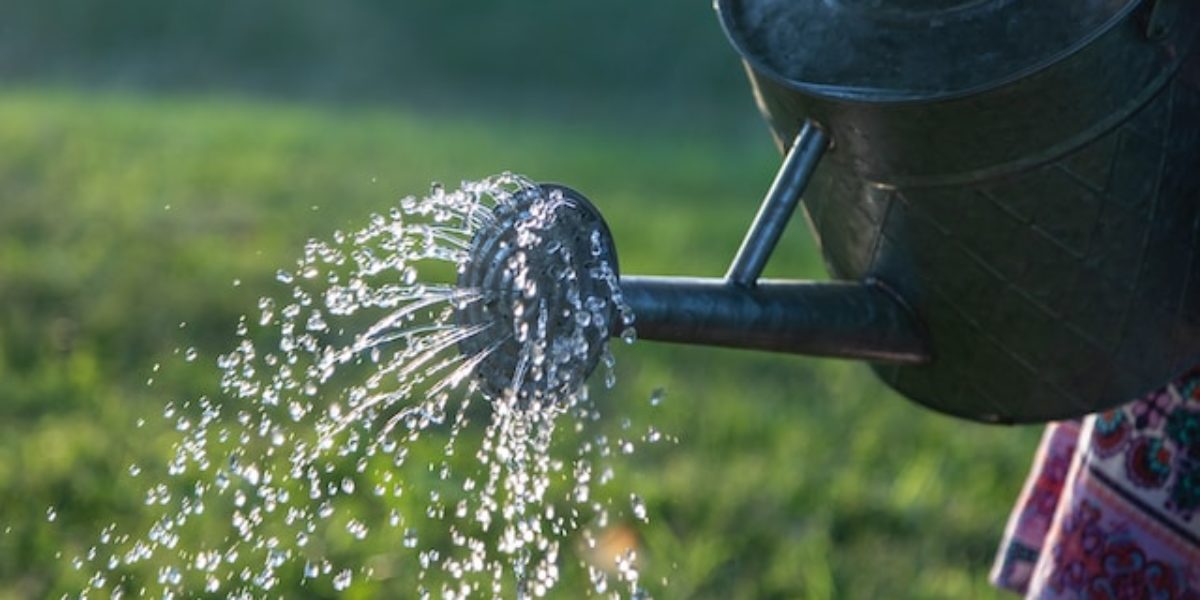Linda Passies is an online editor at Gardeners’ World Magazine and the owner of GroenePassies.nl. For the Third Floor, she wrote the article below.
I have over a hundred houseplants in my house. Plus another 20 outdoor plants that have to be brought inside for the winter. I have more than one allotment and vegetable garden too. So I couldn’t do without a watering can – it’s part of my standard equipment as a plant lover and gardener.
I’m pretty demanding, and so I’ve bought a whole series of watering cans over the years. My current collection consists of small indoor cans and bigger ones for outdoors. But not every watering can meets my exacting standards, which might be surprising for such an everyday product. Which watering can I use depends on the plant and the setting.
Water the soil, not the leaves
When you water a houseplant, it’s usually important to make sure that the water ends up on the soil rather than the leaves. Some plants can develop mould if the leaves stay wet for too long or get wet too often. In other cases, the water simply flows off the leaves, in which case it doesn’t find its way to the roots but onto the floor or table instead. If you’re unlucky, you might have to break out your mop. So it’s advisable to use a watering can for plants of this type. A long spout makes it easier to water the plant between the leaves, so that the water goes straight to the right place.
But not every watering can is equally handy: some of them produce too large an arc of water. That’s not good, because it can then be hard to aim correctly. And too abrupt a jet of water isn’t ideal either, because before you know it, you find yourself standing in a puddle of water. So the design of the watering can’s spout is very important. Its length and angle determine how the water comes out of the watering can.
Opening
In addition to a long spout, a watering can has an opening through which it can be filled. You place the opening under the tap (or water butt) to fill the can with water. In virtually every design, however, the handle of the watering can is positioned right above the opening. Something that obviously wasn’t thought through properly. I’m sure you’ve done it yourself: as soon as you place a watering can under a tap and turn on the water, it goes straight over the handle, splashing off it and all over the kitchen.
You can try to avoid this by holding the can at an angle under the flow. But that’s already a challenge with standard taps, let alone the kind of designer taps we often have these days. These are often square or rectangular in shape, so they don’t fit under the handle, making it very hard to fill up the watering can. So, if you’re looking for a can to water your houseplants without getting anything else wet, you’re best advised to check out the handle first.
Watering cans for outdoor use
Most watering cans for outdoor use also have a handle over the opening, but in this case it’s a good design choice. Outdoor watering cans are much bigger than indoor ones, which means they’re obviously heavier when completely filled with water. Positioning the handle at the top makes it easier for the gardener to lift and tilt the can. Unlike the indoor watering can, filling outdoor ones is not a problem, because the bigger the can, the bigger the opening through which to fill it.
There’s one model of watering can, however, that does not have a handle over the opening at all: the traditional British one, which is mostly made of steel and has two handles. The first is located in front of the opening, close to the spout, while the second handle can be found at the back. Neither is positioned over the opening, which makes it easier to fill the can with water. You can often lift a British watering can with one hand, unless it is filled to the brim, in which case, you need both hands to use it.
Imitating the rain with a watering can
Outdoor watering cans often have a ‘rose’ or sprinkler head, a perforated attachment that allows you to imitate the rain. Without a rose, you end up pouring a powerful stream of water onto the ground. The attachment is indispensable in a vegetable garden: if you don’t use it, you risk washing away your seeds. You can also accidentally wash away the roots of your plants or compact the ground, in which case the soil will not get sufficient air – bad for both the roots of the plant and the underground ecosystem in general.
The appearance of a watering can
Watering cans come in all shapes and sizes: big, small, with long or short spouts and differently sized openings for filling them. Most of them are boring and grey, but you can also buy amusing, colourful and cheerful watering cans. How about a teapot-shaped model? Most ‘teapot’ types, like the traditional British watering can – have two handles. There are cans shaped like elephants (the trunk makes a great spout!), dachshunds and garden gnomes.
To some people, a nice-looking watering can is a real asset: it’s part of your home décor and its practical functionality is less important. To others, a watering can is only truly perfect if it does its job well. And if you’re anything like me, you’ll need a whole collection of them to figure out which one really is the ideal model.

